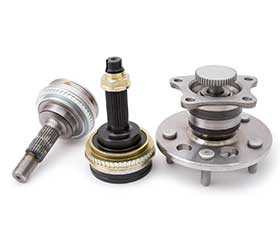8 月 . 28, 2024 18:17 Back to list
replace engine valve cover gasket
How to Replace Engine Valve Cover Gasket A Step-by-Step Guide
The valve cover gasket is a crucial component of your vehicle’s engine, sealing the area between the valve cover and the cylinder head. When this gasket fails, it can lead to oil leaks, decreased engine performance, and potential damage to surrounding components. If you’ve noticed oil pooling around the engine or a burning oil smell, it may be time to replace the valve cover gasket. This article will guide you through the steps to replace your engine valve cover gasket effectively.
Tools and Materials Needed
Before you begin, gather the necessary tools and materials. You'll need
- A new valve cover gasket - Ratchet set (including sockets) - Torque wrench - Screwdrivers - Gasket scraper (or a plastic putty knife) - Clean cloths - Engine oil (for lubricating bolts)
Step 1 Preparation
Start by ensuring your engine is cool. Disconnect the battery to prevent any electrical issues during the process. It's also a good idea to consult your vehicle’s service manual for specific instructions related to your make and model.
Step 2 Remove Components
Depending on your engine layout, you may need to remove several components to access the valve cover. This can include the intake manifold, ignition coils, and any wiring harnesses that obstruct your path. Keep track of all bolts and components removed for easy reassembly.
Step 3 Remove the Valve Cover
Once you have clear access to the valve cover, use your ratchet and appropriate socket to remove the bolts securing it in place. Lift the valve cover carefully, taking care not to damage any connected components. If the cover is stuck, a gentle tap with a rubber mallet may help.
replace engine valve cover gasket

Step 4 Clean the Surface
Before installing the new gasket, thoroughly clean both the valve cover and the cylinder head surfaces. Use a gasket scraper to remove any old gasket material and oil residue. Ensuring a clean surface is critical for the new gasket to seal properly.
Step 5 Install the New Gasket
Place the new valve cover gasket into its designated groove on the valve cover. Ensure it sits evenly without any kinks or twists. If your gasket isn’t preformed, apply a thin layer of gasket maker as per the manufacturer’s instructions.
Step 6 Reinstall the Valve Cover
Carefully place the valve cover back onto the cylinder head, aligning the holes for the bolts. Hand-tighten the bolts to keep the cover in place, and then use a torque wrench to tighten them to the specified torque setting as indicated in your service manual.
Step 7 Reassemble Components
Reinstall any components you removed earlier, ensuring all wiring and hoses are securely connected. Reconnect the battery and check all connections before starting your engine.
Step 8 Test for Leaks
Start your engine and allow it to run for a few minutes. Check the area around the valve cover for any signs of leaks. If everything looks good, you’ve successfully replaced your engine valve cover gasket!
Replacing the valve cover gasket can save you from potential engine damage and improve overall performance. Always consult your vehicle’s manual for specific procedures and torque specifications. Happy wrenching!